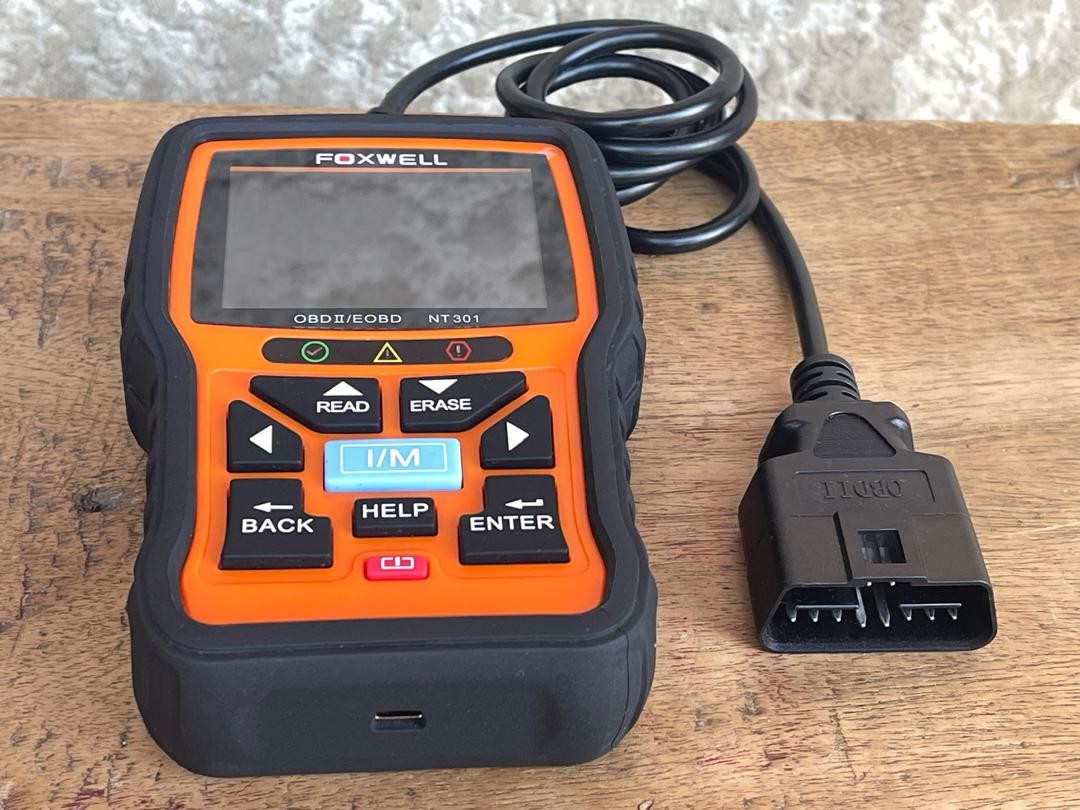The Foxwell NT301 OBD2 code scanner often gets overlooked in a market saturated with diagnostic tools. However, after extensive testing, it’s clear this scanner deserves a closer look. This comprehensive review delves into the NT301’s features, functionality, limitations, and ultimately, whether it’s the right OBD2 scanner for your needs.
First Impressions and Unboxing the Foxwell NT301
Initially, the NT301 might appear larger than necessary. However, it’s surprisingly comfortable to hold and operate with one hand. The buttons are soft and responsive, providing a satisfying tactile experience. The clear, easy-to-read color display adds to the overall positive first impression. The package includes the scanner itself, a user manual, and an update cable, all housed in a simple clamshell case.
Foxwell NT301: Features and Functionality
The NT301 shines in its execution of basic OBD2 functions, making it a valuable tool for both DIYers and professionals.
Reading and Erasing Diagnostic Trouble Codes (DTCs)
The NT301 quickly and efficiently retrieves DTCs from a vehicle’s OBD2 port. Crucially, it provides concise descriptions of each code, translating cryptic alphanumeric codes into understandable language. For example, it clarifies that the code P0113 signifies a problem with the “Intake Air Temperature Sensor 1 Circuit High,” allowing users to quickly grasp the potential issue. Erasing codes after repairs is equally straightforward, thanks to a dedicated erase button and menu option.
Live Data Streaming
Monitoring live data is vital for diagnosing issues that might not trigger a DTC. The NT301 excels in this area, providing real-time data streams that allow users to observe sensor readings and identify anomalies. This feature is indispensable for troubleshooting problems like subtle vacuum leaks or sensor malfunctions that might otherwise go undetected.
DTC Lookup with Enhanced Explanations
The built-in DTC lookup function goes beyond simple definitions. It provides in-depth explanations of possible causes for each code, empowering users with the knowledge to diagnose and address underlying issues. This feature effectively eliminates the need for constant online searches, saving time and frustration.
Dedicated Home Button and Ergonomic Design
A dedicated home button allows users to quickly return to the main menu, streamlining navigation and enhancing user experience. The scanner’s ergonomic design, including the well-placed buttons and comfortable grip, contributes to its ease of use, especially during extended diagnostic sessions. The protective case adds durability and ensures the scanner can withstand the rigors of daily use.
Foxwell NT301 Limitations
While the NT301 offers a robust set of features, it does have some limitations:
Lack of Backlit Keys
The absence of backlit keys can hinder usability in low-light conditions. This is a notable drawback, especially for users who frequently work in dimly lit garages or at night.
Basic Code Reader Functionality
The NT301 focuses on core OBD2 functionality. It doesn’t offer advanced features like ABS or transmission module scanning. While sufficient for most basic diagnostic needs, users requiring more comprehensive scanning capabilities might need to consider a more advanced tool.
Short Cord Length
The relatively short cord length can limit maneuverability during diagnostics. While adequate for most situations, a longer cord would provide greater flexibility and convenience.
Foxwell NT301: The Verdict
The Foxwell NT301 is a reliable and user-friendly OBD2 code scanner that excels in its core functionality. Its clear DTC descriptions, live data streaming, and enhanced DTC lookup make it a valuable tool for diagnosing and troubleshooting common vehicle problems. While the lack of backlit keys and limited advanced features are drawbacks, the NT301’s overall performance and ease of use make it a solid choice for DIYers and professionals seeking a dependable basic OBD2 scanner. If you need a simple, effective, and affordable way to diagnose your car’s engine troubles, the Foxwell NT301 deserves serious consideration.

